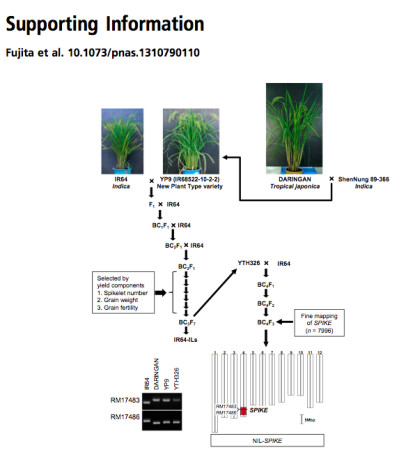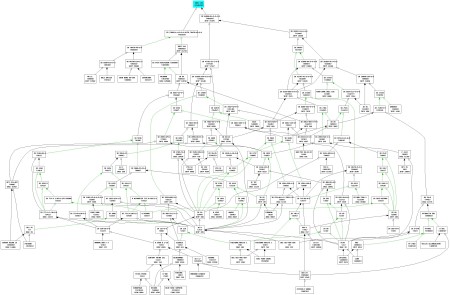- Data geeks tuck into bananas.
- Will it help the Filipino smallholder, though?
- Dietary diversity suggested as an indicator of welfare at national level. Wow.
- Seeds of Discovery discovers it has made progress.
- Celebrating a potato breeder. We should do more of that.
- Beer-fueled conservation. Not what you’re thinking.
- Milling minor millets means more money.
- CIRAD breaks down intercropping rubber. And nutmeg?
- Better forest governance by the numbers. How about savannas
- Arab region gets an environmental atlas. Also in Google Earth.
- The Pacific learns about the ITPGRFA. Not for the first time…
- I guess these guys didn’t know about MTAs.
PGR and climate change: The video of the book
Twenty years ago there was Climatic Change and Plant Genetic Resources. Now there is, ahem, Plant Genetic Resources and Climate Change. If you don’t have the $120-odd for the book, you can always watch the 30-odd minute video. Actually, both are well worth it.
Nibbles: IK, Magi, Yield gap maps, ICRISAT DG, Maize and drought, Phenotyping workshop, Clone epigenetics, Root & tubers, Botanical social networking, Mexican archaeobotany, LOTW
- Intergovernmental Platform on Biodiversity and Ecosystem Services documents examples of how indigenous people’s knowledge conserves biodiversity, including of the agricultural kind.
- The truth about frankincense and myrrh. Talk about traditional knowledge.
- Can global crop production meet future demands? The Story Map.
- What ICRISAT is doing about the above, from the horse’s mouth.
- Progress in Achieving and Delivering Drought Tolerance in Maize — An Update: “Germplasm collections are assuming greater importance if gains from native genes are to be sustained. Efficient and accurate field phenotyping remains essential for genetic progress.”
- Workshop in Field-based High Throughput Phenotyping. Next April, in Arizona, you maize people.
- A clone is a clone is… no wait.
- Root and tuber people already planning their next big shindig, in October 2015. Meanwhile, they’re getting down to work in the Pacific.
- AoB Blog on plant science on Facebook. Also on Facebook.
- Solanum expert Dr Sandy Knapp on the of Global Plants Initiative.
- Archaeological remains of agriculture found in Nuevo Leon are oldest for that Mexican state.
- Legumes (genera) of the world now online, thanks to Kew.
Rice breeding: the history behind the hope behind the hype
Yes, I’m fully aware that you’re fed up with examples of how complex and time-consuming plant breeding is, and how reliant it is on material in genebanks being available in perpetuity. I can hear you saying it from here: “We get it, already; move on.” But it’s my blog, not to mention my job, so here’s another one.
You may have seen news of the identification of a gene in rice that the authors of a recent paper in PNAS think holds promise for significantly increasing yields. I won’t speculate here about whether that hope will be fulfilled, or indeed whether theirs was the best strategy to follow. I just want to illustrate what it took to get to the point of being in a position to thus speculate. Here’s the background, from the introduction section of the PNAS paper: it goes back over 20 years:
In 1989, a breeding program for New Plant Type (NPT) rice was launched at IRRI to increase the yields of modern indica cultivars by using genetic material from tropical japonica landraces. Several Indonesian tropical japonica landraces — which are characterized by large panicles, large leaves, a vigorous root system, thick stems, and few unproductive tillers — have been used in international breeding programs. However, despite these features, the NPT cultivars yield less than modern indica cultivars, mainly because of low grain fertility and low panicle number. To genetically dissect and elicit the valuable traits of NPT cultivars, we backcrossed the NPT cultivars … against modern indica cultivar IR64 to develop introgression lines (ILs) (Fig. S1). BC3-derived ILs, which had favorable yield-related traits and few undesirable traits, were selected by field observation. …a near-isogenic line (NIL)…, derived from tropical japonica landrace Daringan with an IR64 genetic background, had more spikelets per panicle and more branches than IR64.
Here’s what that looks like, from the supplementary materials of the paper (it’s that Fig. S1 mentioned in the snippet quoted above):
That’s a lot of work. Let’s recap. First there are the various plant lines that came out of the NPT project, which in themselves were the result of a lot of work. Then there was the crossing of those to IR64, and various generations of backcrossing (that’s all those BCs) to end up with different plants in which different bits of the tropical japonica genome are embedded into what is mainly the IR64 indica genome. Then one of those bits of tropical japonica genome had to be found to improve IR64. That came from a particular landrace from Indonesia, called Daringan. ((In fact from a cross between that and another variety, but anyway.)) Which, of course, the authors found in the IRRI genebank, though they don’t actually say so, unfortunately. Phew.
Quick digression here into Genebank Database Hell. It turns out that if you look at the relevant databases at IRRI, ((And trust me, we have.)) you can’t in fact prove to 100% certitude that the sample of Daringan used by the breeders in question in this work came from the IRRI genebank. There’s a gap in the chain of data, due to the fact that by and large genebanks and breeders use different documentation systems, or used to. Everybody currently working at the genebank knows that the seeds came from them. Problem is, what happens when they go? They really need to correct the data in their documentation system, which almost uniquely at IRRI now covers both genebank accessions and breeding materials. But who wants to fund correcting data in a database? Anyone who wants to see genebanks serve breeders’ needs effectively and efficiently into the far future, thats who.
Anyway. Ok, so after all that, now the gene has been isolated and it, and it only, has been inserted into one of the newer indica varieties, IRRI 146, with promising results. But wait, it’s not over, because IRRI 146 is itself far from a simple thing. Here is its pedigree, courtesy of IRRI’s database. You can click on it to see it better, if you dare.
So each incremental step in breeding, each of the advances that the press likes to hype as a breakthrough, actually relies on building on all the painstaking genetic reshuffling work that came before, going back decades in many cases, with the occasional infusion of new diversity from genebanks, as in the case of Daringan. We may have this gene now, and I hope it does lead to those hoped-for increases in yield when it finally gets into farmers’ fields, but you know we’re going to need another one soon, and then another one. ((Which, incidentally, leads some to question the premise of the gene-by-gene approach, but that’s another story. And one which also ends with genebanks.)) We always do. And we’re going to get them from seed which is sitting in a genebank. We hope.
Nibbles: de Schutter’s solution, CIAT’s diversification, Land Institute’s video, WRI’s infographics,
- One (admittedly fairly big) thing to do to fix the food system.
- Two-faced fique.
- 14 minutes — count them — on the Land Institute’s work on perennial cereals. Well worth it.
- 18 graphics to explain the food system. You know, the one that needs fixing.

